Serves 2-4
Level of difficulty 3
Procedure:
Sauce:
Preheat the sous vide bath to
183 F/84 C.
Simmer the garlic in olive/vegetable oil on low heat in a saute pan until it softens–do not allow it to brown. Remove from heat. Combine the tomato paste, water, oregano, salt, white pepper, and white sugar in a food processor or blender and add the garlic. Process until smooth. Transfer to a Ziploc 1 gallon freezer bag.
Without sealing the zipper, slowly lower the bag into the bath. The bag will sink–make sure the water level just barely exceeds the top of the level of sauce in the bag–leave room to add water later. Rather than seal the bag, drape the opening over the edge of the bath. This “sans vide” (without vacuum) process is an alternative to attempting to seal a liquid in a vacuum bag, for those who have not experienced the difficulty in doing so. Hold in place with the container’s lid. Process for a minimum of one hour. Reduce the temperature setting on the immersion circulator to:
135 F/58 C
Add iced or cold water to bring the temperature down in the bath to approximately 150 F/55 C.
Seal the chicken breasts in heat rated vacuum bags and stage into the bath, which should now come down to the target temperature of 135 F/58 C. Continue processing for a minimum of
4 hours
After the time has elapsed, remove the chicken breasts from the bath and submerge in iced/tap water until they achieve 70 F/21 C. Refrigerate to 40 F/4 C. In this state they can be safely refrigerated for up to two weeks.
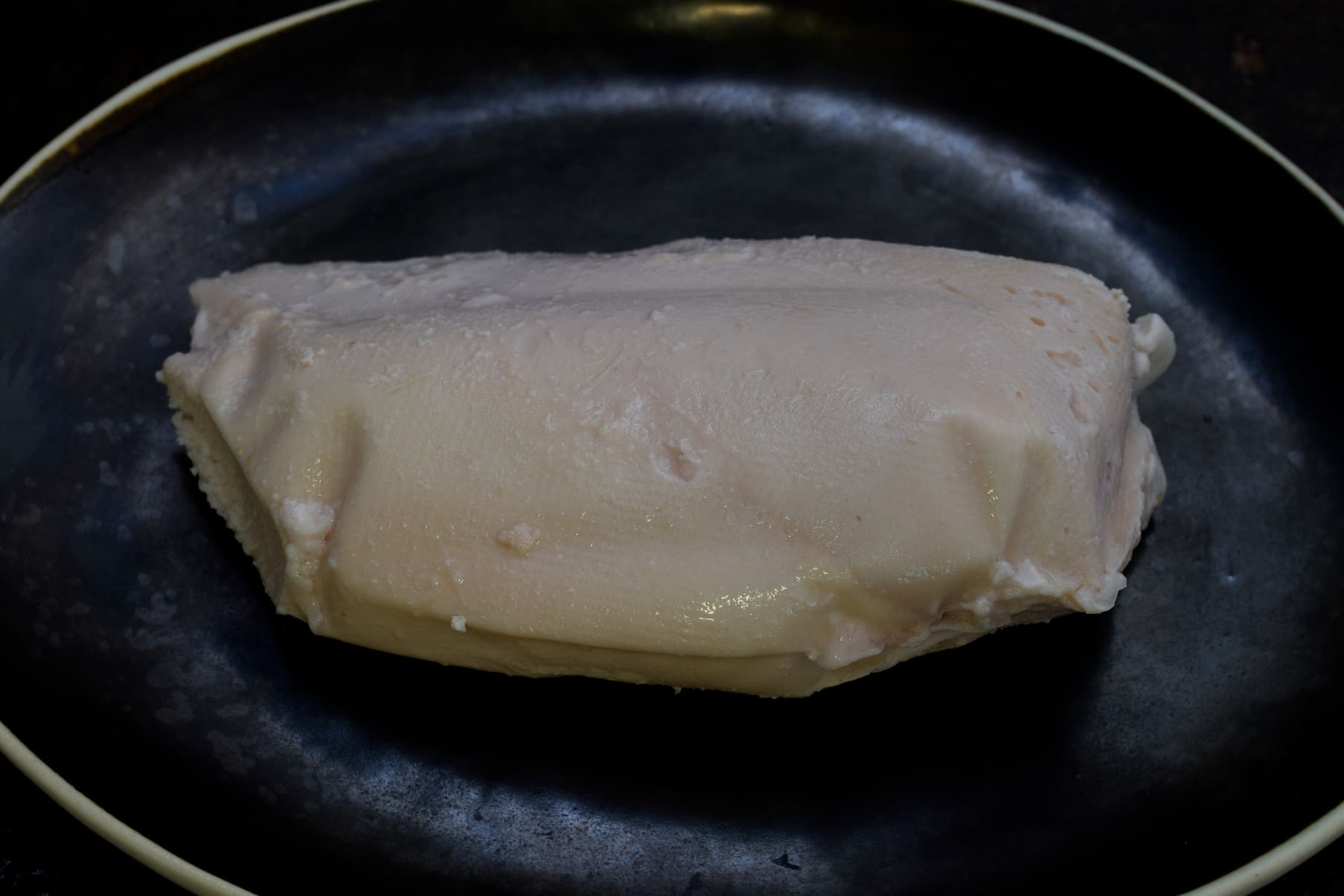
Remove the chicken breasts from the bags and pat dry with a clean towel.
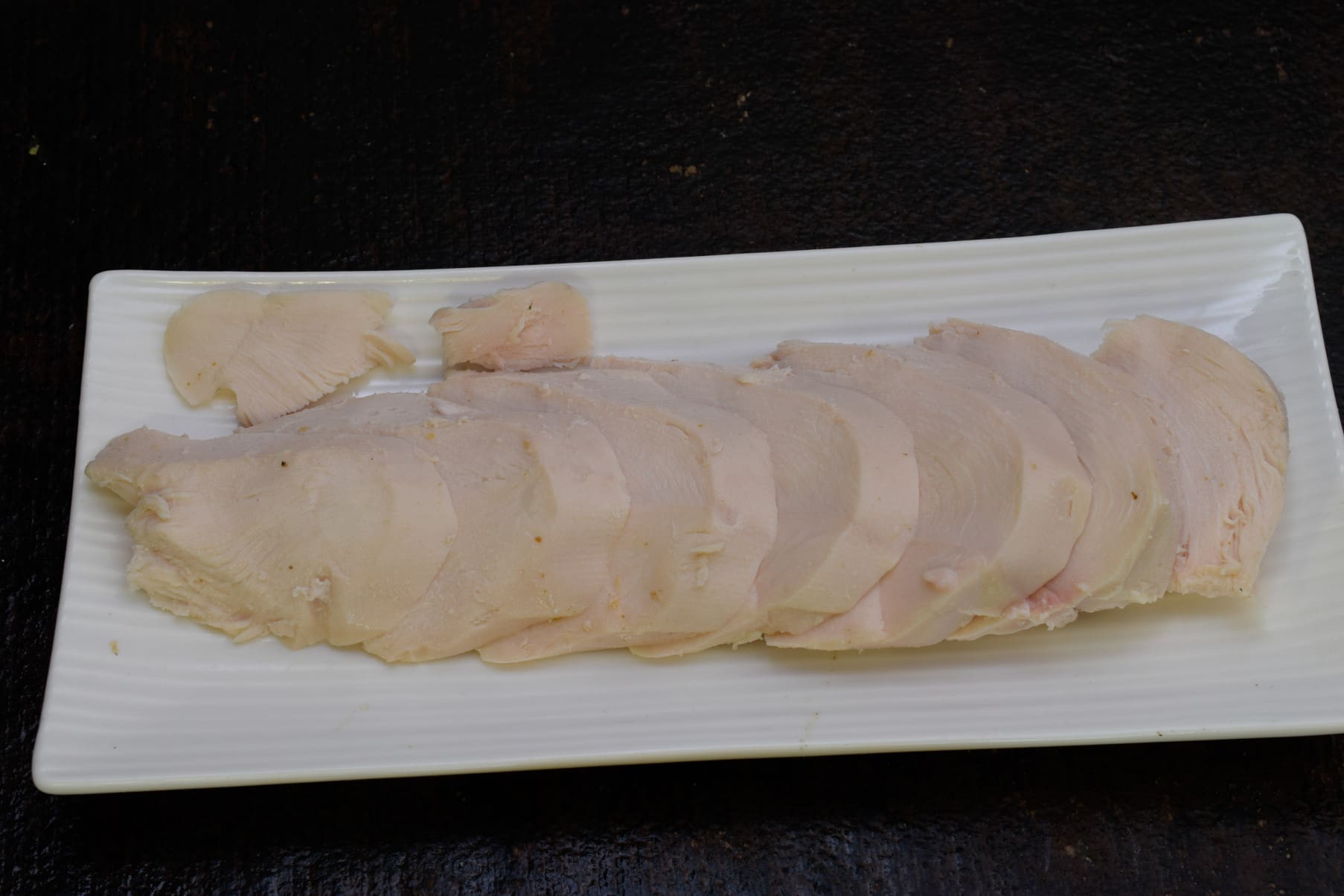
Using a sharp knife, cut the chicken breast on the bias to create slices between 1-2 oz/30-60 g slices.
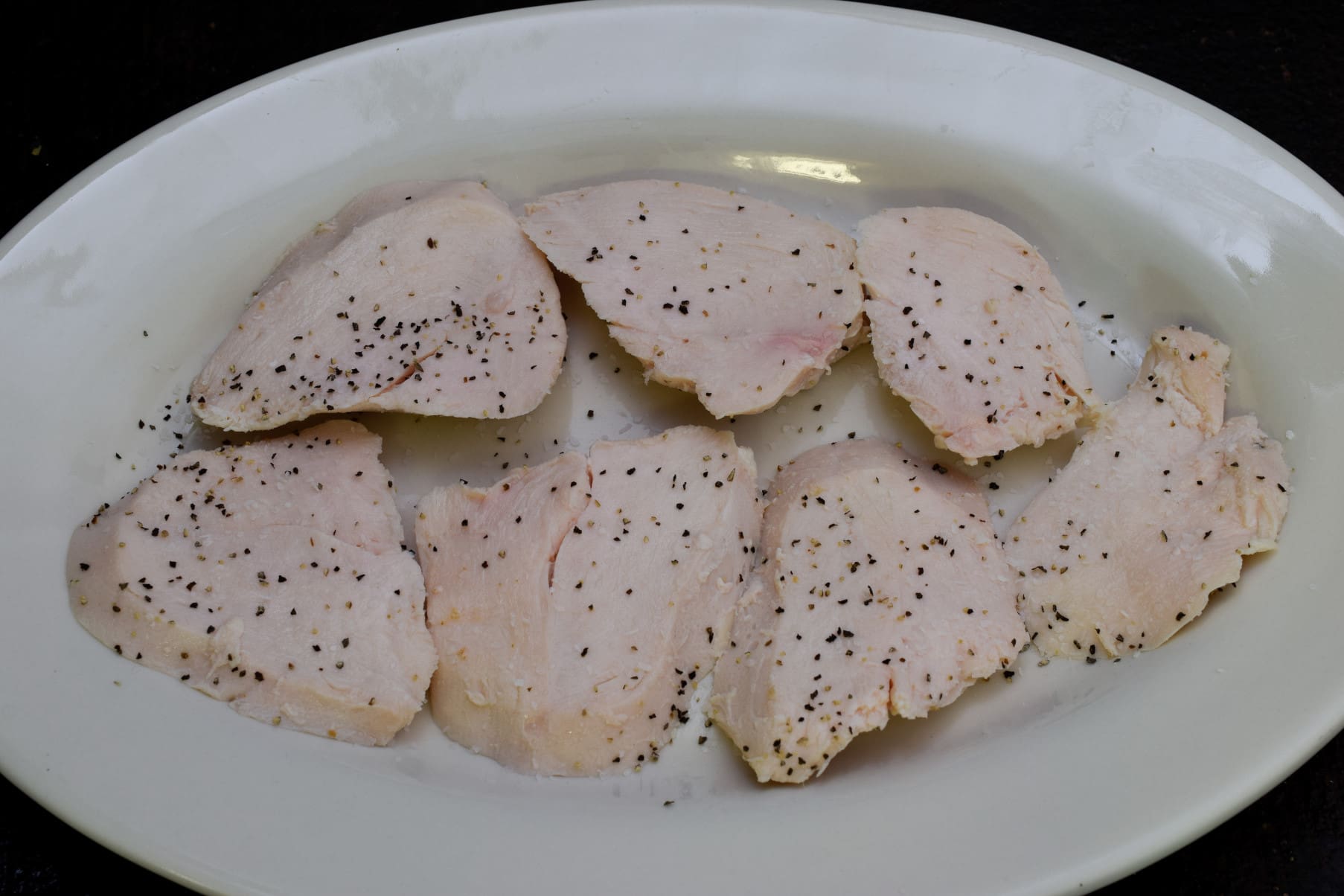
Sprinkle lightly with salt and pepper.
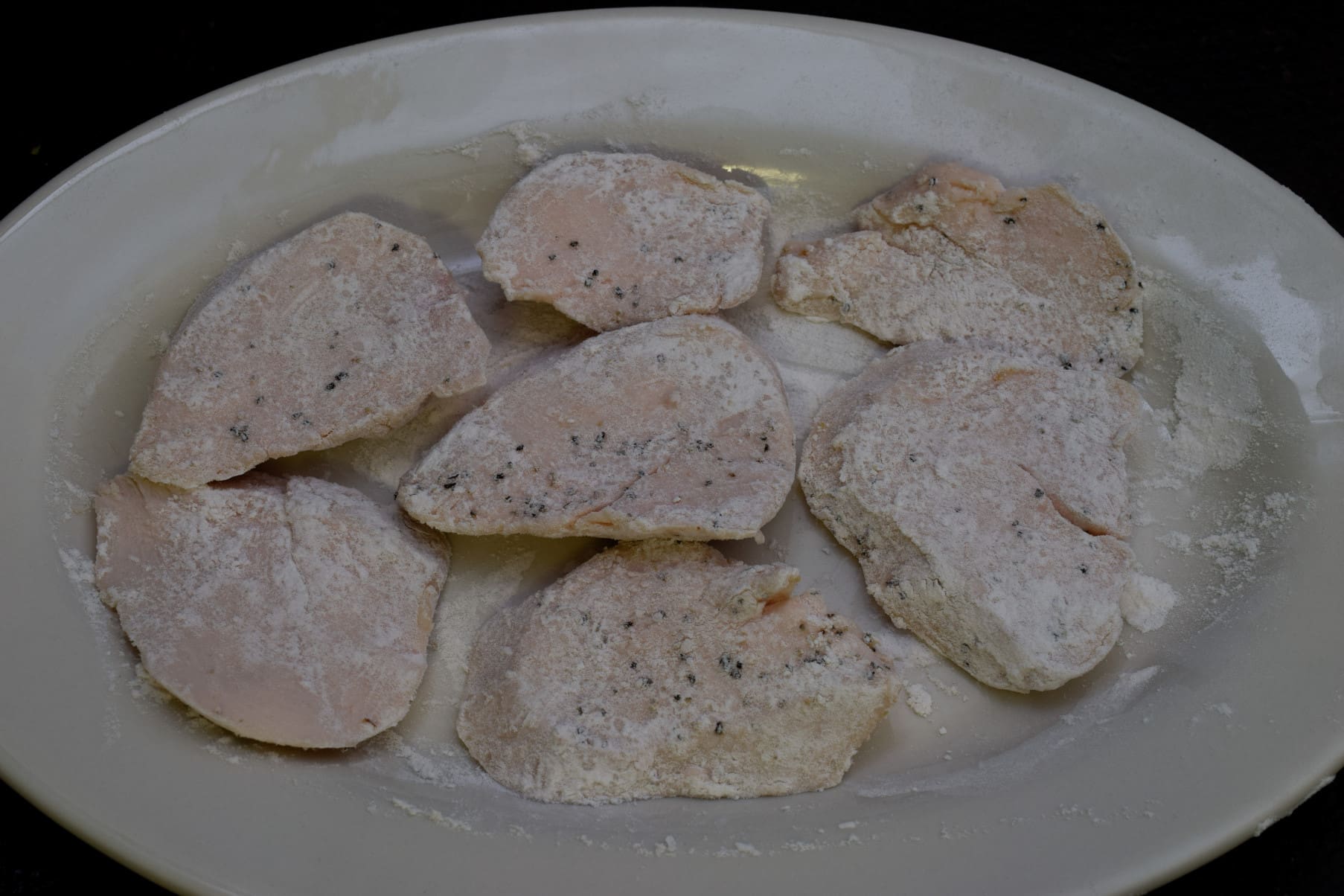
Use a dredge or kitchen strainer to dust the chicken with flour on both sides.
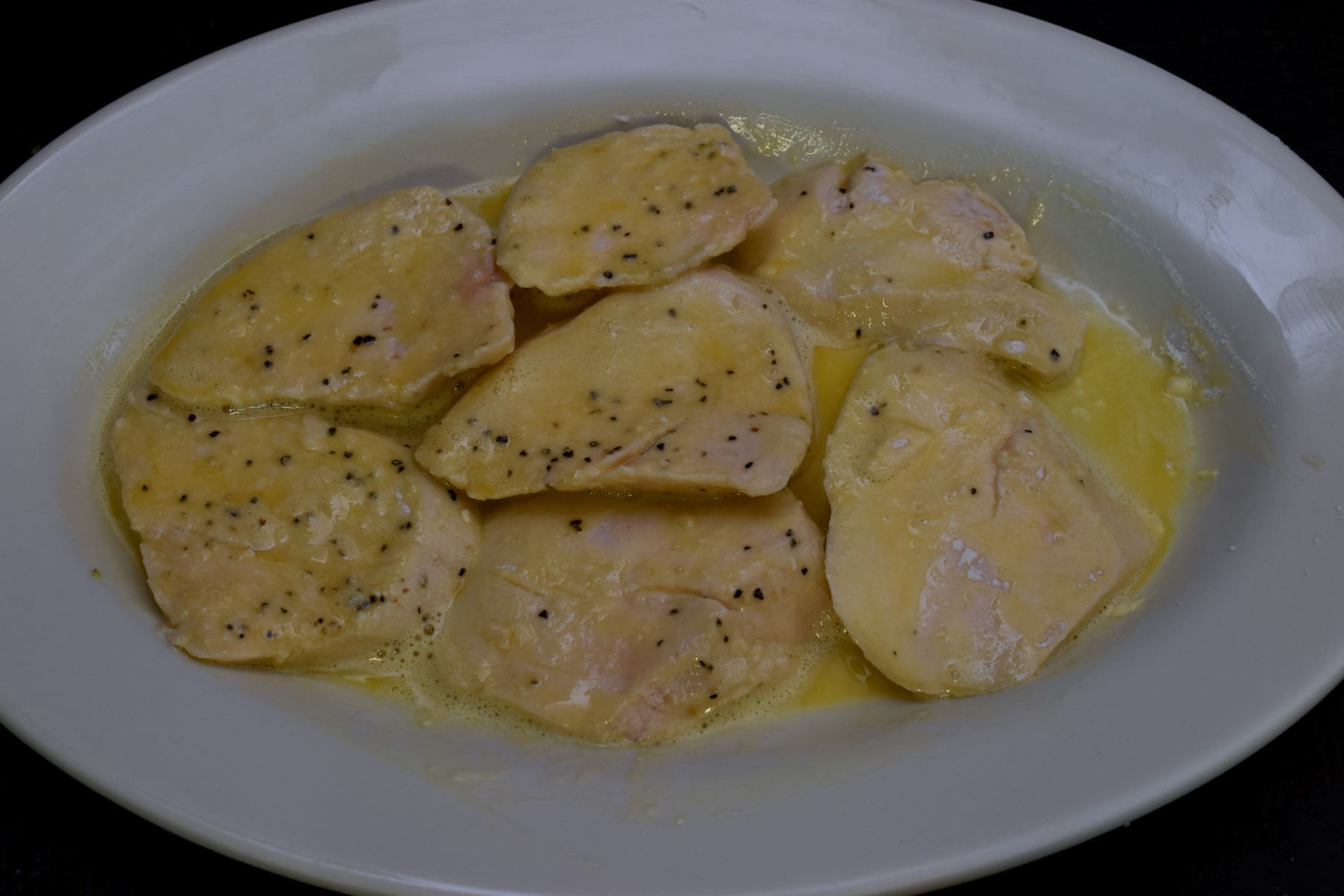
Coat with beaten whole egg.

Drain well and coat with the crumbs.

Refrigerate the breaded breasts for one half hour on parchment or butcher paper that has been sprinkled with a few crumbs. This helps the breading to cling.
Service
Heat the skillet to approximately 275 F/135 C, add enough oil to coat the bottom of the pan and put cutlets in the pan–do not crowd. There should be at least 1″/2.4 cm between each piece to facilitate even browning. Fry until brown on one side, brown on the other side, remove from the pan and drain on a paper towel. Pour out the used oil, wipe out the pan with a clean towel and repeat the process until all of the cutlets are browned.
Remove the sauce from the bath and pour carefully into a suitable container–it does not require any additional cooking. Add half of the chopped parsley and stir in the unsalted butter. Do not add heat. Cover the center of a plate(s) with 1-2 oz/30-60 ml of the sauce. Place the chicken cutlet(s) on top, sprinkle with mozzarella and melt in the oven using the broiler function or with the low flame on a propane torch. Sprinkle with Parmesan cheese and parsley, serve with pasta and vegetable if desired.
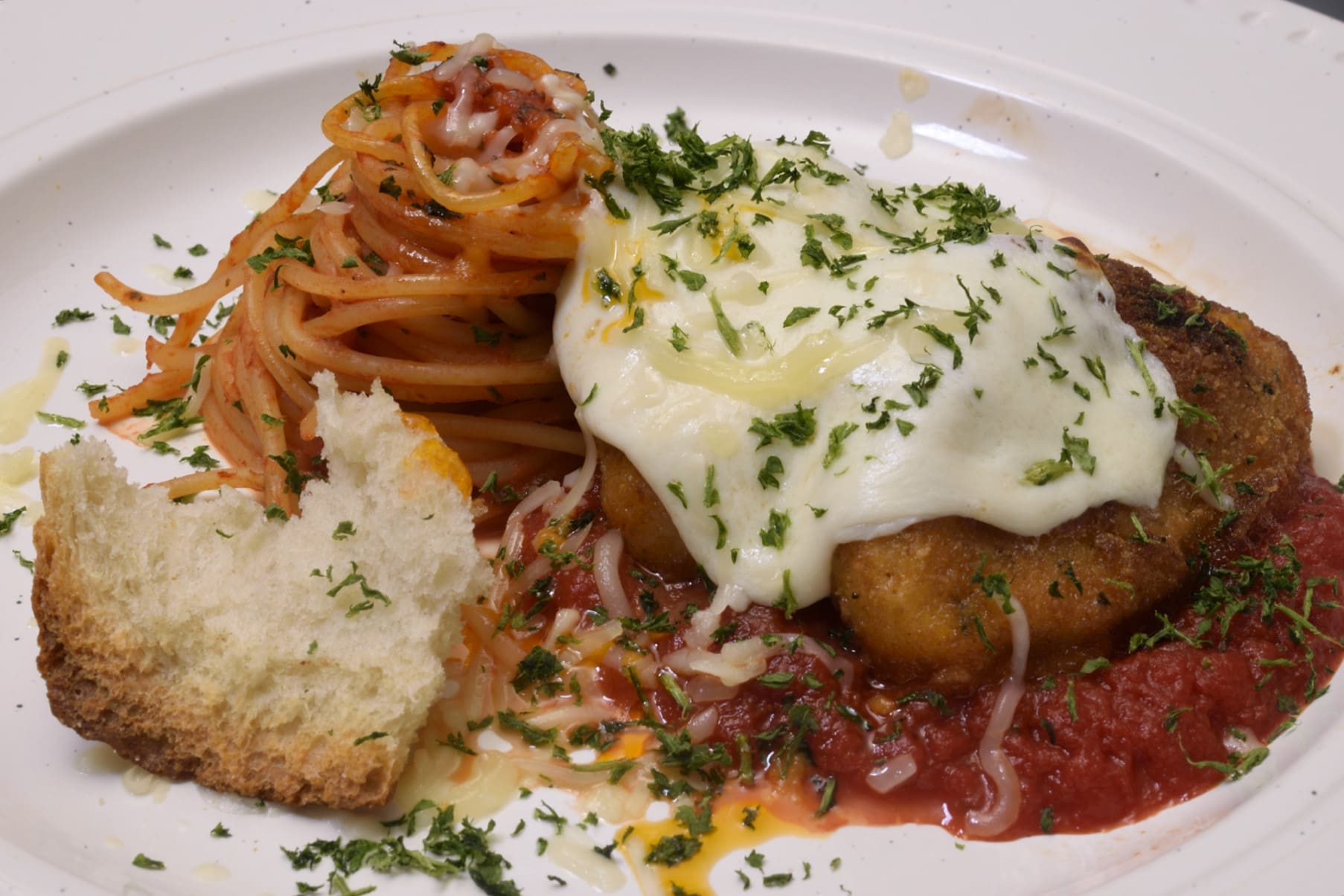
Whether chicken is cooked through is always a concern in traditional methods. Antibiotic resistant pathogens have complicated the matter. Sous vide pasteurizes the chicken, adding an extra layer of safety.
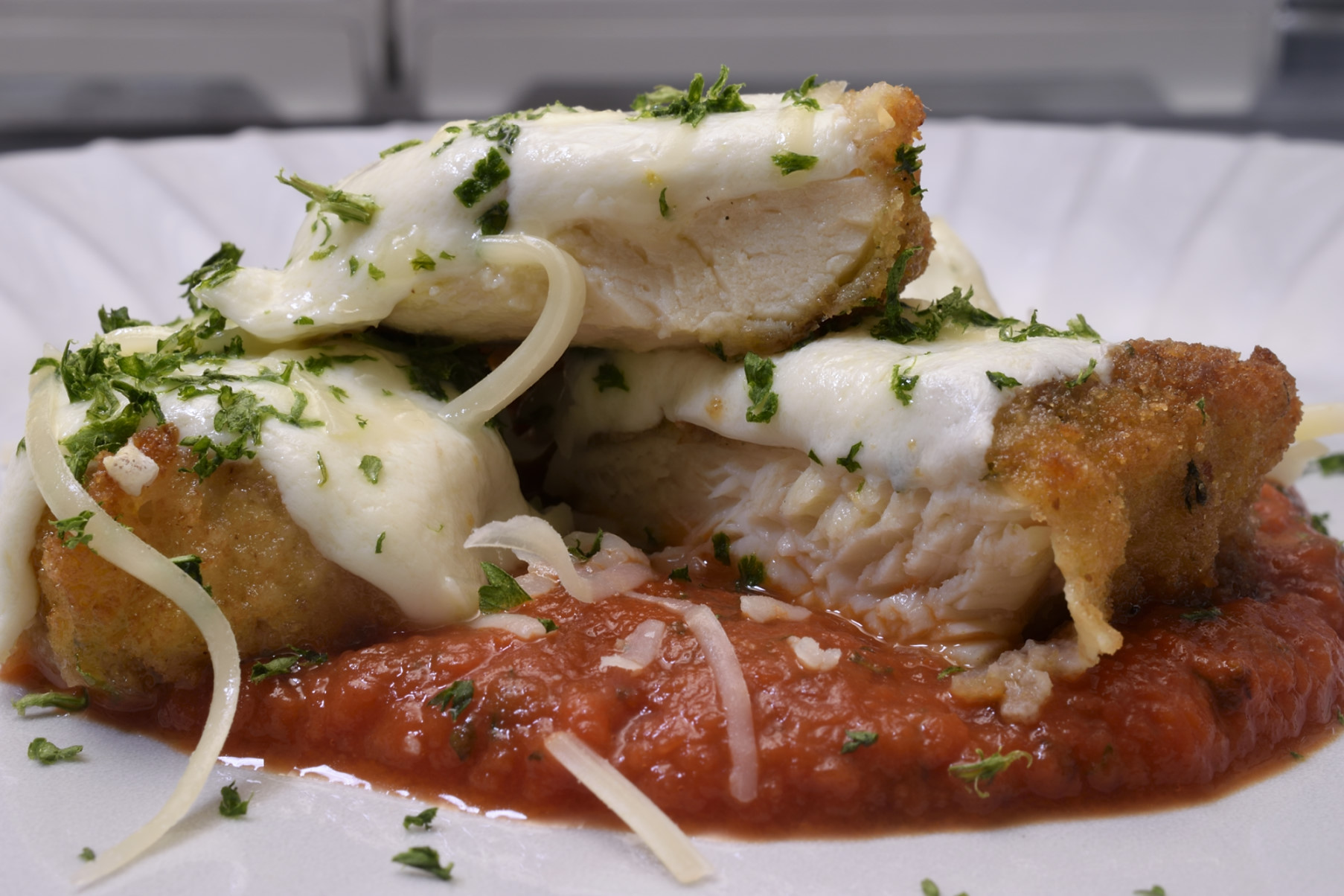
You will never cut into a piece of “pink”–or dry–chicken again!
Norm King
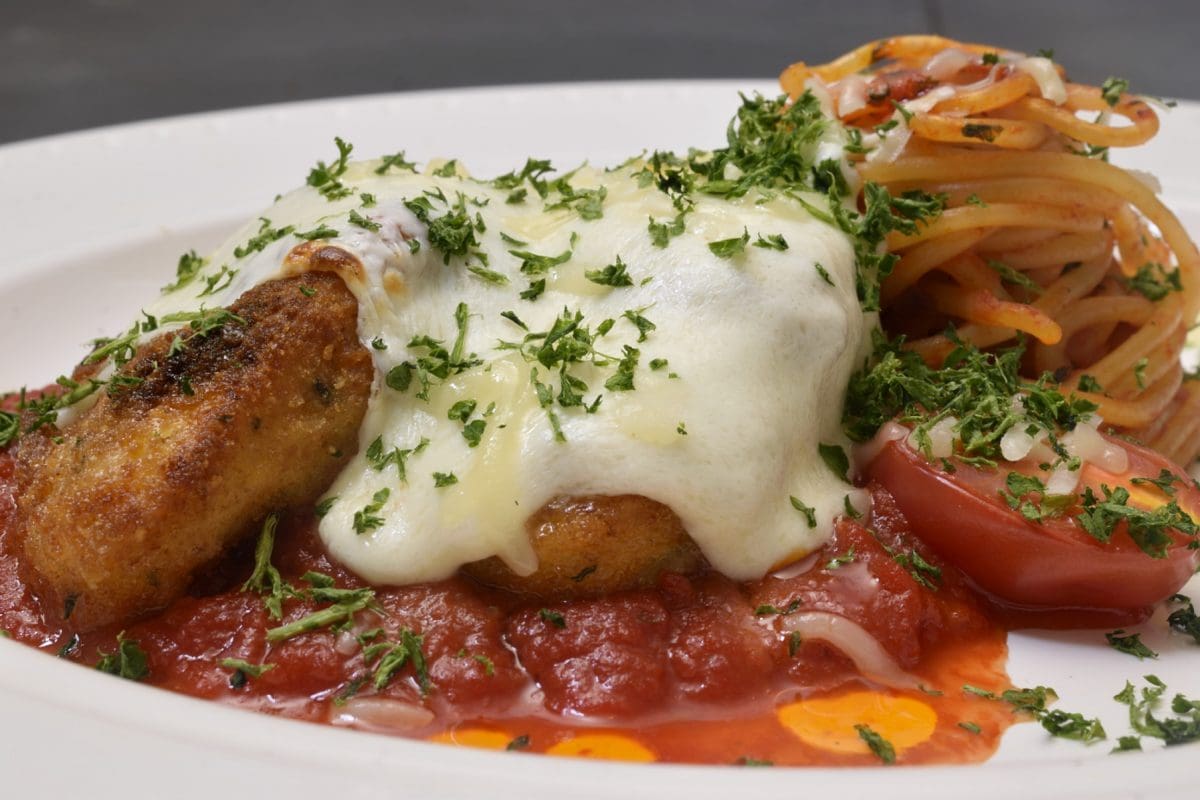


Wow, fantastic blog structure! Hoow lengthy have yoou been running
a blog for? you make blogging look easy. The entire glance of your web site is fantastic, lett
alone the content material!
Take a look at my blog: https://Chooserightcasino.Widezone.net/